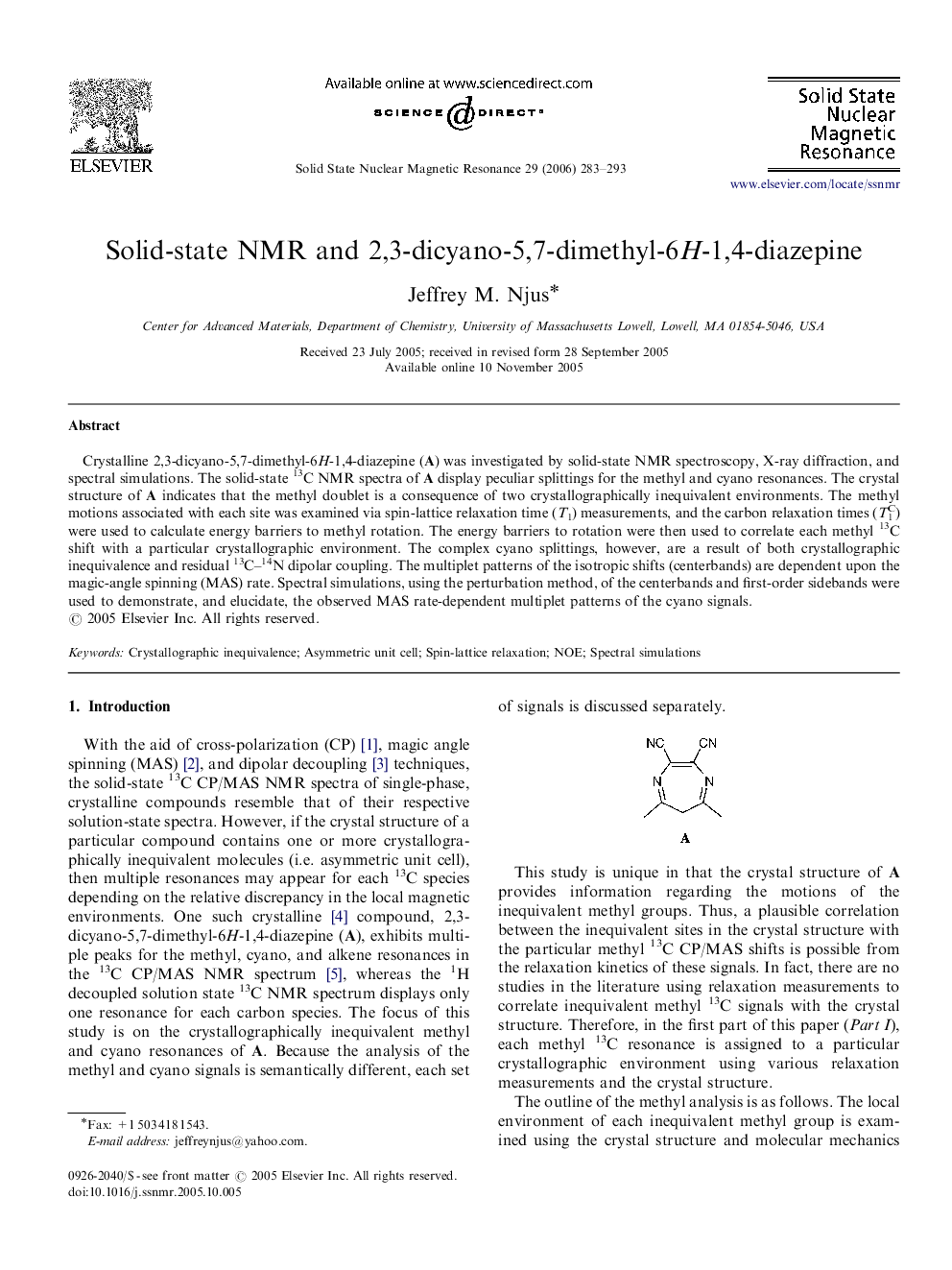| Article ID | Journal | Published Year | Pages | File Type |
|---|---|---|---|---|
| 5420956 | Solid State Nuclear Magnetic Resonance | 2006 | 11 Pages |
Abstract
Crystalline 2,3-dicyano-5,7-dimethyl-6H-1,4-diazepine (A) was investigated by solid-state NMR spectroscopy, X-ray diffraction, and spectral simulations. The solid-state 13C NMR spectra of A display peculiar splittings for the methyl and cyano resonances. The crystal structure of A indicates that the methyl doublet is a consequence of two crystallographically inequivalent environments. The methyl motions associated with each site was examined via spin-lattice relaxation time (T1) measurements, and the carbon relaxation times (T1C) were used to calculate energy barriers to methyl rotation. The energy barriers to rotation were then used to correlate each methyl 13C shift with a particular crystallographic environment. The complex cyano splittings, however, are a result of both crystallographic inequivalence and residual 13C-14N dipolar coupling. The multiplet patterns of the isotropic shifts (centerbands) are dependent upon the magic-angle spinning (MAS) rate. Spectral simulations, using the perturbation method, of the centerbands and first-order sidebands were used to demonstrate, and elucidate, the observed MAS rate-dependent multiplet patterns of the cyano signals.
Keywords
Related Topics
Physical Sciences and Engineering
Chemistry
Physical and Theoretical Chemistry
Authors
Jeffrey M. Njus,
